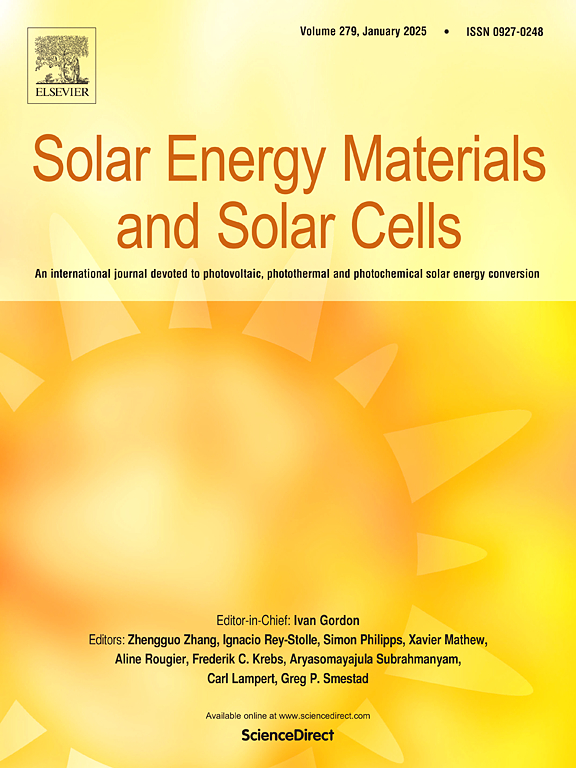Ex-situ doping of polysilicon hole contacts for silicon solar cells via electron-beam boron evaporation
IF 6.3
2区 材料科学
Q2 ENERGY & FUELS
引用次数: 0
Abstract
In this study, a novel method for doping of p+ polysilicon (poly-Si)/SiOx passivated contacts is demonstrated. This is achieved by using a thin (∼3 nm) boron layer, deposited by electron beam evaporation, as a dopant source on top of an intrinsic poly-Si layer, which allows diffusion of boron into the structure at temperatures above 900 °C. Surface passivation, exemplified by the implied open circuit voltage (iVoc), and contact resistance, represented by the specific contact resistivity (ρc), were studied as a function of activation parameters including the drive-in temperature/time. By optimising the activation condition, doping layer thickness, and hydrogenation process, an iVoc of 709 mV and a ρc of 3.2 mΩcm2 is achieved for a 180 nm poly-Si film. This technique was also demonstrated to allow simple patterning of p+ poly-Si regions via use of a shadow mask during the boron deposition process. These results highlight an alternative way to form patterned region doping for high performance p+ poly-Si/SiOx passivated contacts, allowing advanced silicon solar cell architectures.
求助全文
约1分钟内获得全文
求助全文
来源期刊

Solar Energy Materials and Solar Cells
工程技术-材料科学:综合
CiteScore
12.60
自引率
11.60%
发文量
513
审稿时长
47 days
期刊介绍:
Solar Energy Materials & Solar Cells is intended as a vehicle for the dissemination of research results on materials science and technology related to photovoltaic, photothermal and photoelectrochemical solar energy conversion. Materials science is taken in the broadest possible sense and encompasses physics, chemistry, optics, materials fabrication and analysis for all types of materials.
 求助内容:
求助内容: 应助结果提醒方式:
应助结果提醒方式:


